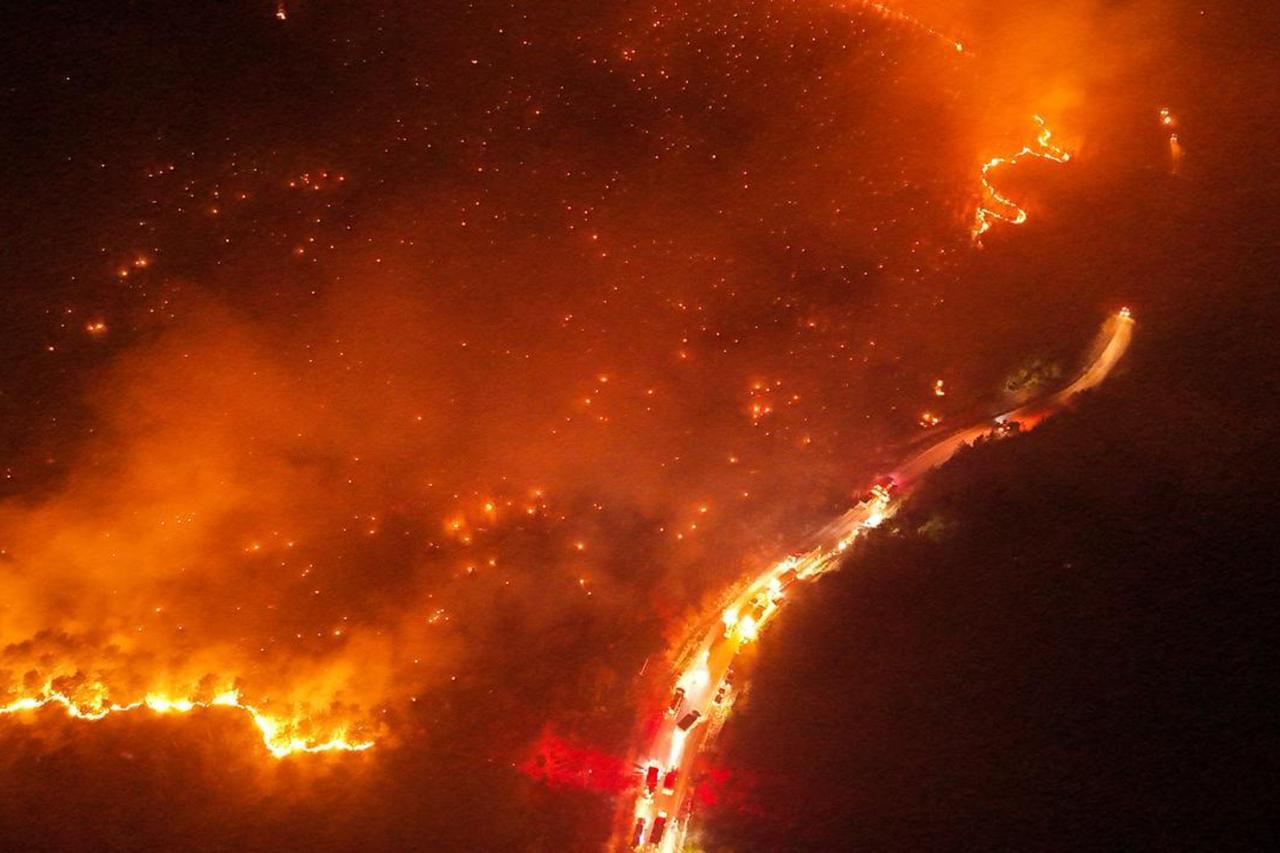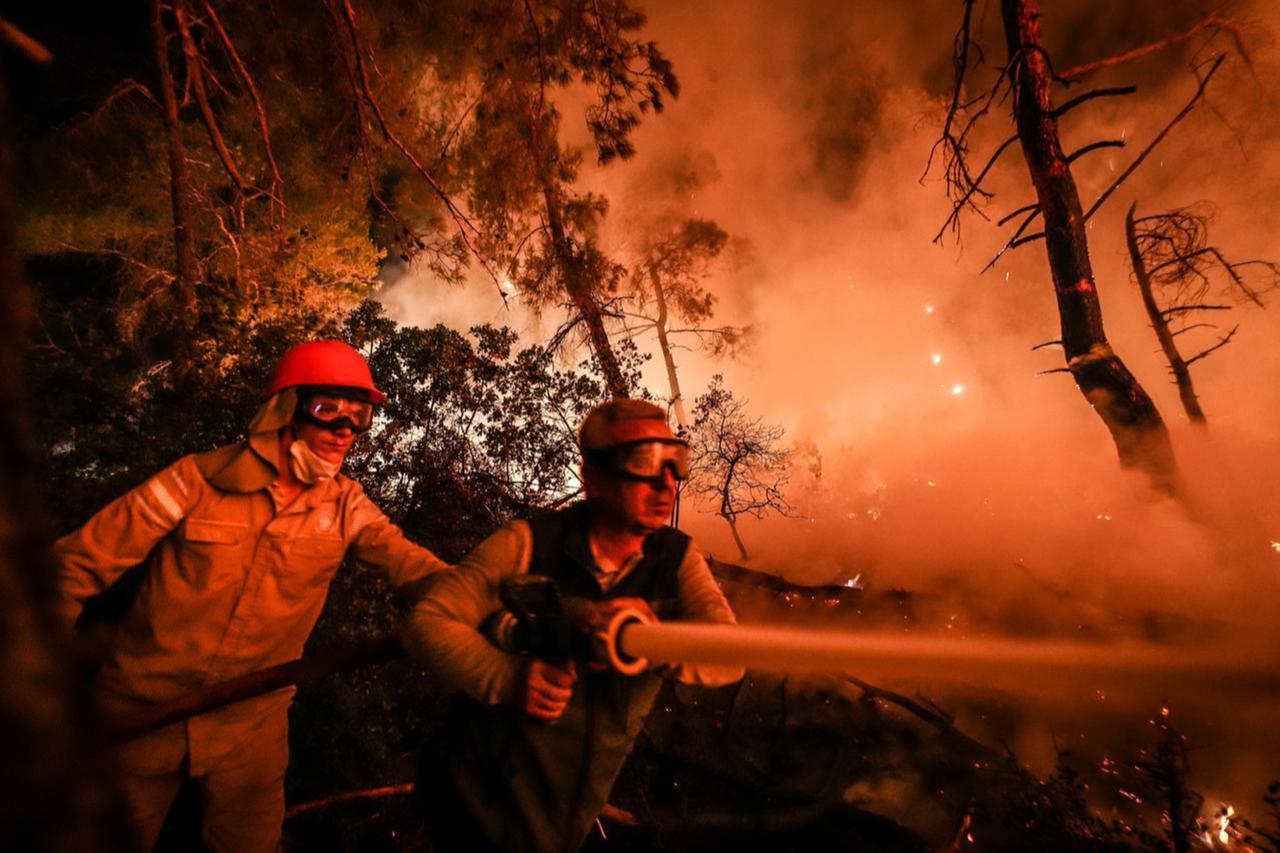
Forest fires not only devastate land but also endanger seas and rivers, carrying long-lasting damage to marine ecosystems, according to a Turkish expert.
After all the fires in Türkiye, the main focus is on terrestrial destruction, but aquatic systems are also suffering, said Herdem Aslan, chairperson of the Water Ecosystem Protection Association and a marine biologist at Canakkale Onsekiz Mart University’s Faculty of Science, in an interview with Anadolu.

Aslan said she observed the seabed covered with sediment when diving one and a half years after the 2021 Marmaris fire.
"This sediment prevented all organisms from receiving light and oxygen, causing them to suffocate. I observed that many creatures had died. Especially sessile organisms living on the seafloor — such as corals, sponges, and seagrasses — as well as small organisms that serve as important food sources for fish, were literally buried alive. This is a phenomenon that can still be observed years later.”
Aslan warned that iron particles in ash carried by wind or rivers create another danger.
"This substance increases photosynthesis in microorganisms living in the sea. Phytoplankton — microscopic organisms found in both saltwater and freshwater and responsible for every second breath we take — multiply excessively with this fertilizer. As phytoplankton increase, so do zooplankton, the primary consumers that feed on them, which in turn can provide food for fish larvae,” she said.
“At first glance, this may seem beneficial, but in the long run, it is not, because such a biomass increase leads to oxygen depletion in the seas. After the major forest fires in Australia in 2021, excessive amounts of iron carried into the ocean caused mass die-offs in marine life,” she added.
Aslan said wildfires also release black carbon, formed when organic compounds burn at high temperatures, which is a major driver of climate change.
Recalling that trees scorched by the blaze that reached her university campus turned pitch black, she said: “Burned trees produce what is called ‘black carbon.’ Currently, forest fires produce around 40 million to 250 million tons of black carbon per year globally. This, too, reaches oceans and seas via rivers and rainfall.”
She added that black carbon coats marine organisms, leading to their death: “About 6% of known marine sediments already consist of this material, but if forest fires continue to increase due to climate change, human negligence, and inadequate precautions, this number will rise to terrifying levels.”
Research shows coral reefs suffer 100% mortality and seagrass meadows decline after fires, she noted.
The effects of climate change are considered one of the biggest threats facing humanity today, according to many studies and scientific bodies.

Speaking about potential effects of fires near the Canakkale Strait, Aslan said its strong currents could limit accumulation but not eliminate harm.
"The lower Mediterranean current flows into the Sea of Marmara, while the upper Black Sea current flows into the Aegean. Because of these currents, black carbon and iron particles generated by fires may not remain in the Strait in large quantities, but they will still have an impact,” she said.
“We have pre-disaster data on the biodiversity of benthic organisms in the Strait. With future research, we can make comparisons. Marine ecosystems are such complex structures that it is not easy to attribute everything to fires alone. Controlled experiments can help us better understand their outcomes,” she added.